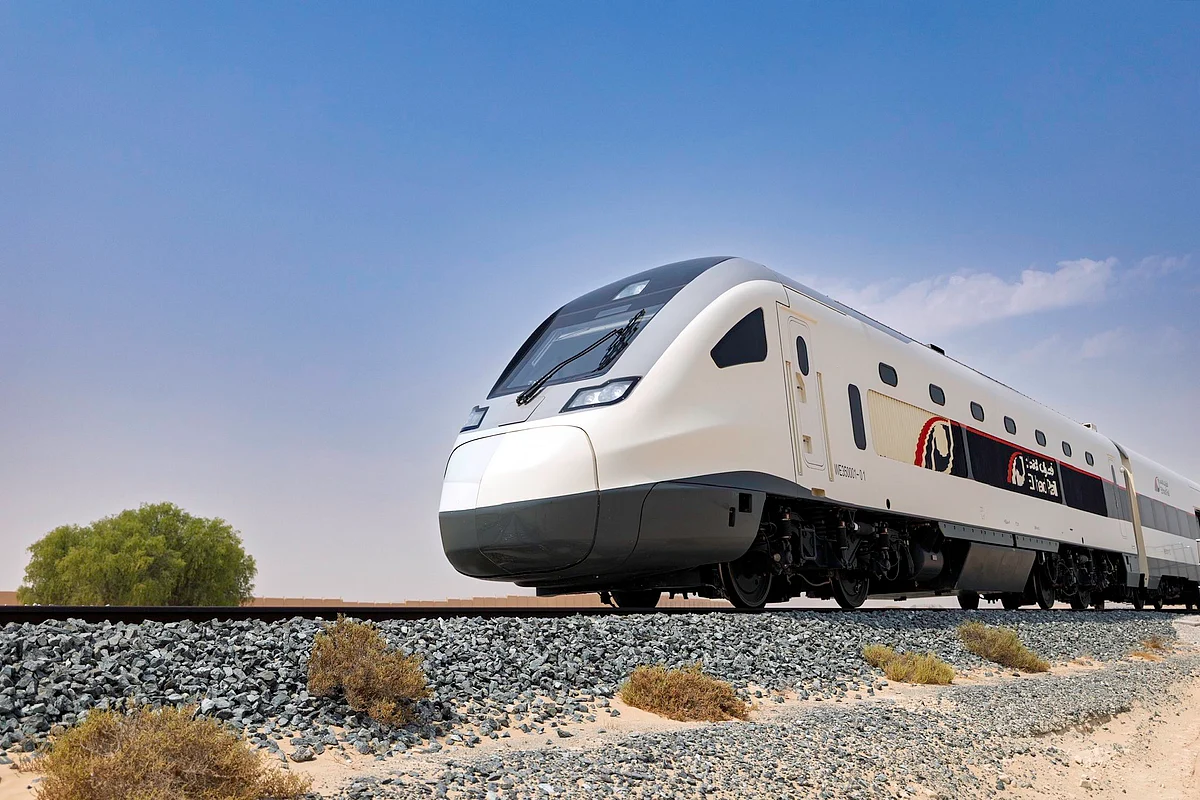
From 'Too Far' To Next Door: How Etihad Rail Will Reshape UAE Property Markets
The UAE's Tier-2 and Tier-3 cities and towns are set to gain significantly from the launch of Etihad Rail's passenger services next year – an upgrade that could potentially elevate them to Tier-1 and Tier-2 status.
According to real estate industry leaders, improved speed and connectivity between major hubs like Dubai and Abu Dhabi and outlying areas such as Al Dhaid, Ruwais, and Fujairah will boost demand in these regions, driving up both property prices and rental rates.
Recommended For You UAE weather: Chance of rain in some areas; mercury to hit 47oC“The launch of Etihad Rail is set to transform the UAE's residential property landscape by making inter-emirate commuting faster and more convenient. Locations that were once seen as too far from major employment hubs, such as Ras Al Khaimah, Fujairah, and emerging communities in Abu Dhabi and Sharjah, are likely to see an increase in demand for both off-plan and ready homes,” said Mark Castley, CEO of Real Estate at Huspy.
Stay up to date with the latest news. Follow KT on WhatsApp Channels.
He added that large infrastructure projects like Etihad Rail typically fuel real estate growth in surrounding areas by improving accessibility and unlocking new demand.
Tier-1 cities are generally more developed, highly urbanised, and offer stronger infrastructure, a higher cost of living, and more employment opportunities. In contrast, Tier-2 cities are often more affordable and less densely populated.
“As commuting becomes easier and faster, we'll likely see more residents moving further out from current city hubs in search of larger homes and better value for money. This shift in demand will naturally push up rental prices in areas that were previously considered too far out due to traffic or commute times,” Castley continued, noting early signs of shifting tenant preferences toward rail-connected zones due to reduced transport costs.
Etihad Rail's national passenger network is scheduled to commence operations in 2026. Once operational, it is expected to carry around 36.5 million passengers annually by 2030. Spanning roughly 900 kilometres, the railway will link 11 cities and regions across all seven emirates.
Firas Al Msaddi, CEO of fäm Properties, noted that land values in Tier-2 cities like Fujairah, Al Dhaid, and Ruwais will face upward pricing pressure – not from speculation, but from organic demand.
“Transit-oriented developments will emerge near confirmed station zones. Think walkable mixed-use clusters around stations like University City, Sakamkam, and Mussafah."
"Second-home markets will be redefined. A family might live in Dubai but own a weekend beach unit in Fujairah, and actually use it, because it's less than an hour away. Dubai will still dominate, but the edges of its dominance are about to expand. Jumeirah Golf Estates station will be a new high-performance corridor,” Al Msaddi said.
“We're not just talking about transportation. We're talking about speed, interconnectivity, and productivity, and how all of that compresses space and time. And when you compress space and time, you reduce opportunity cost. That's where the real value is unlocked."
"This is a UAE transformation. Each emirate has always had something unique to offer. But until now, the opportunity cost of movement, whether for people, goods, or capital, has been too high. Etihad Rail changes that. When you cut travel time from 2 hours to 50 minutes between cities, you don't just save time, you reshape where people choose to live, work, and invest. What used to be 'too far' suddenly becomes next door,”
he added.
Firas continued,“Fujairah is no longer the end of the UAE, it's the Eastern gateway. Ras Al Khaimah becomes a viable weekend market for a Dubai family. Al Ain becomes a realistic base for remote professionals who can now be in the capital or on the coast in under an hour. This creates a complete re-pricing of land value, not based on geography, but based on accessibility.”
Citing a case study, he referenced how satellite cities in Japan transformed after the introduction of the Tokyo-Osaka Shinkansen Line.
“Within 5 years of the line becoming fully operational, both cities witnessed over 40 per cent increase in commercial land values and more than 60 per cent increase in population-linked housing demand."
"Nagoya, in particular, went from a second-tier market to one of the most competitive logistics and office markets in Japan. Why? Not because people loved trains, but because business travel, tourism, and hybrid commuting unlocked economic flow that was previously bottlenecked by time.”
“That same principle applies here, but with one crucial difference: The UAE is building this at a time when we have zero legacy problems. This is the newest, most tech-enabled rail system on the planet,” Firas said.

Legal Disclaimer:
MENAFN provides the
information “as is” without warranty of any kind. We do not accept
any responsibility or liability for the accuracy, content, images,
videos, licenses, completeness, legality, or reliability of the information
contained in this article. If you have any complaints or copyright
issues related to this article, kindly contact the provider above.
Most popular stories
Market Research

- BTCC Exchange Announces Triple Global Workforce Expansion At TOKEN2049 Singapore To Power Web3 Evolution
- Bydfi Joins Korea Blockchain Week 2025 (KBW2025): Deepening Web3 Engagement
- SPAYZ.Io White Paper Explores Opportunities, Challenges And Ambitions In Payments Industry
- Currency Relaunches Under New Leadership, Highlights 2025 Achievements
- Salvium Solves The Privacy Paradox: Salvium One Delivers Mica-Compliant Privacy That Exchanges Can List
- FLOKI Funds Clean Water Wells In Africa Through Partnership With WWFA




















Comments
No comment